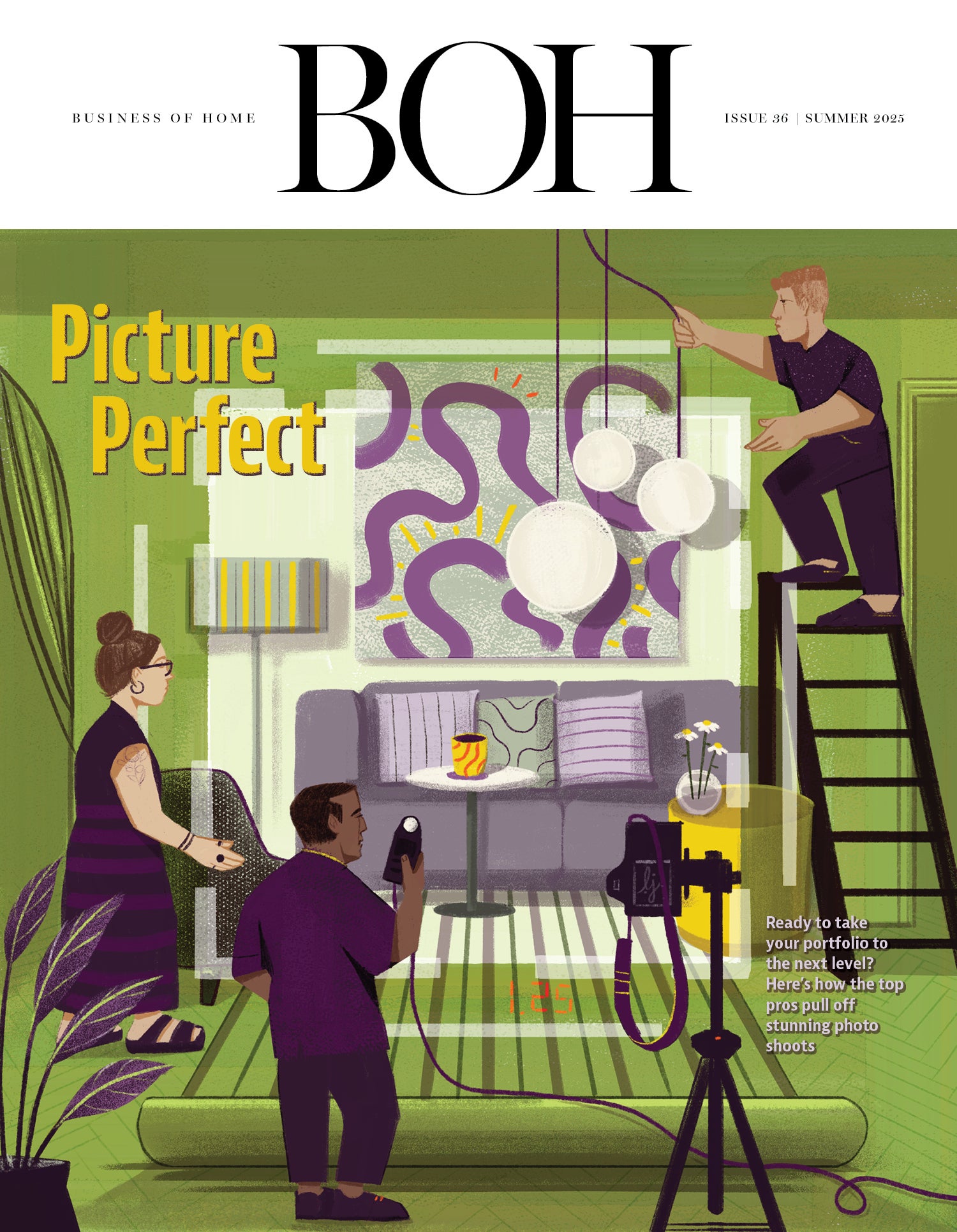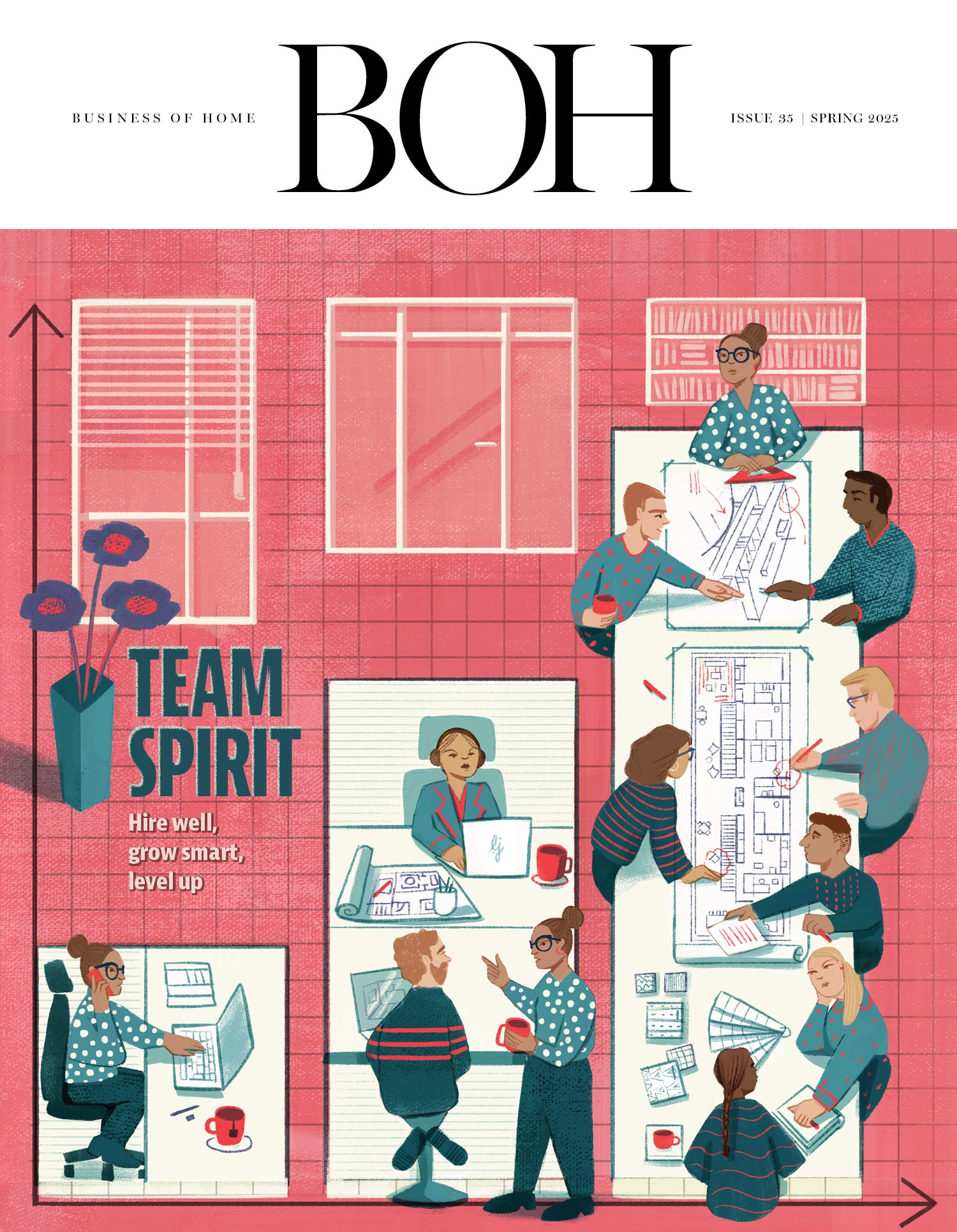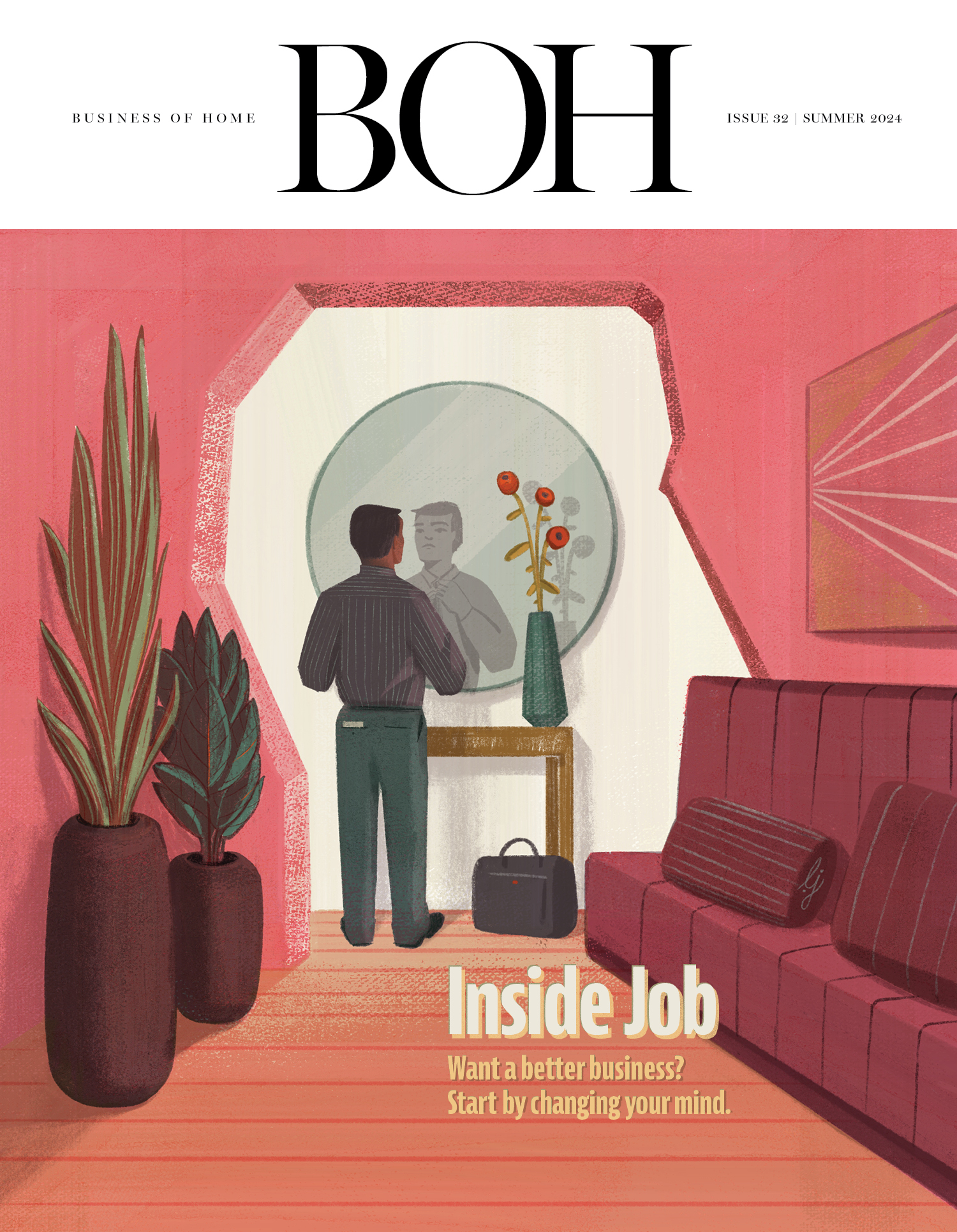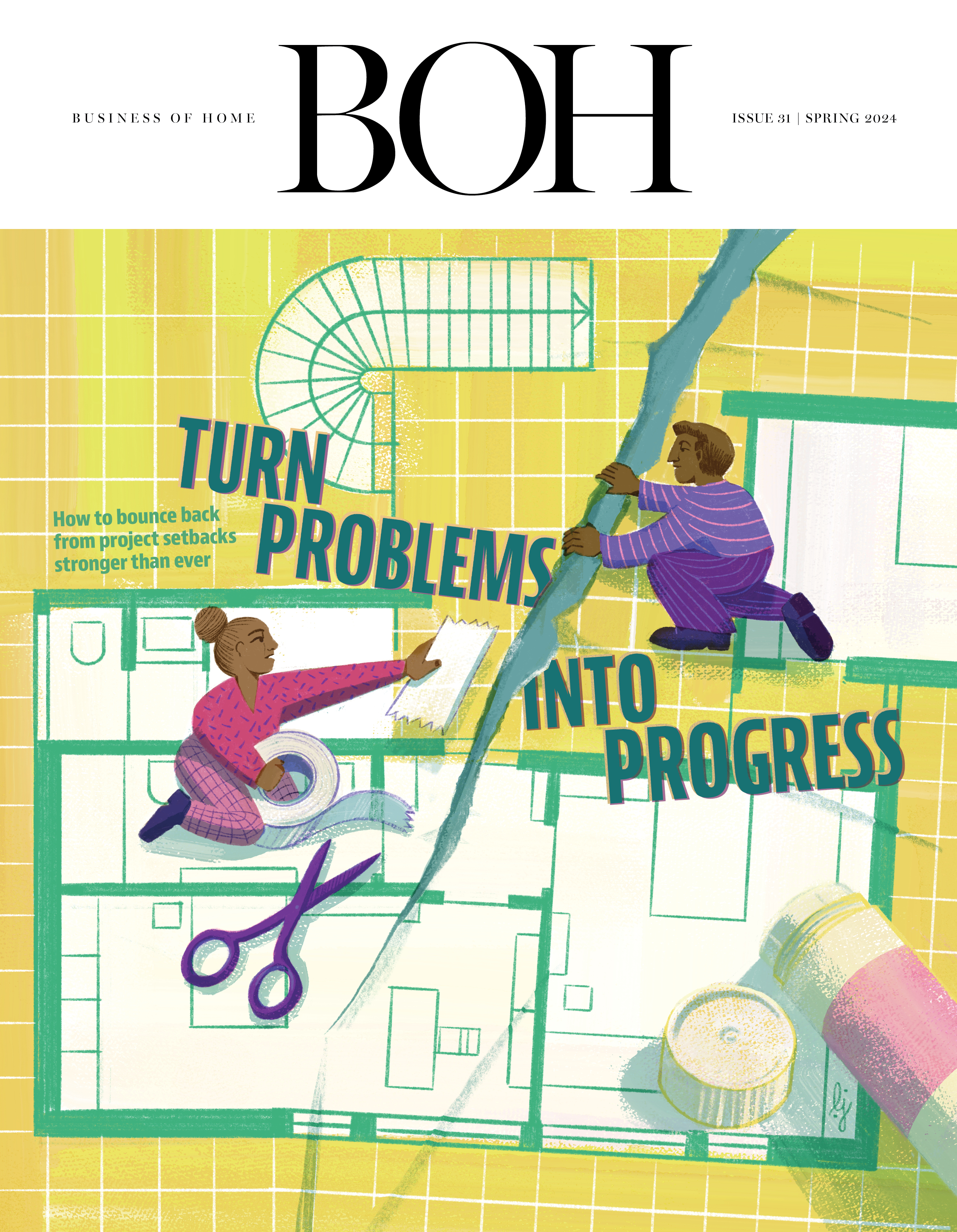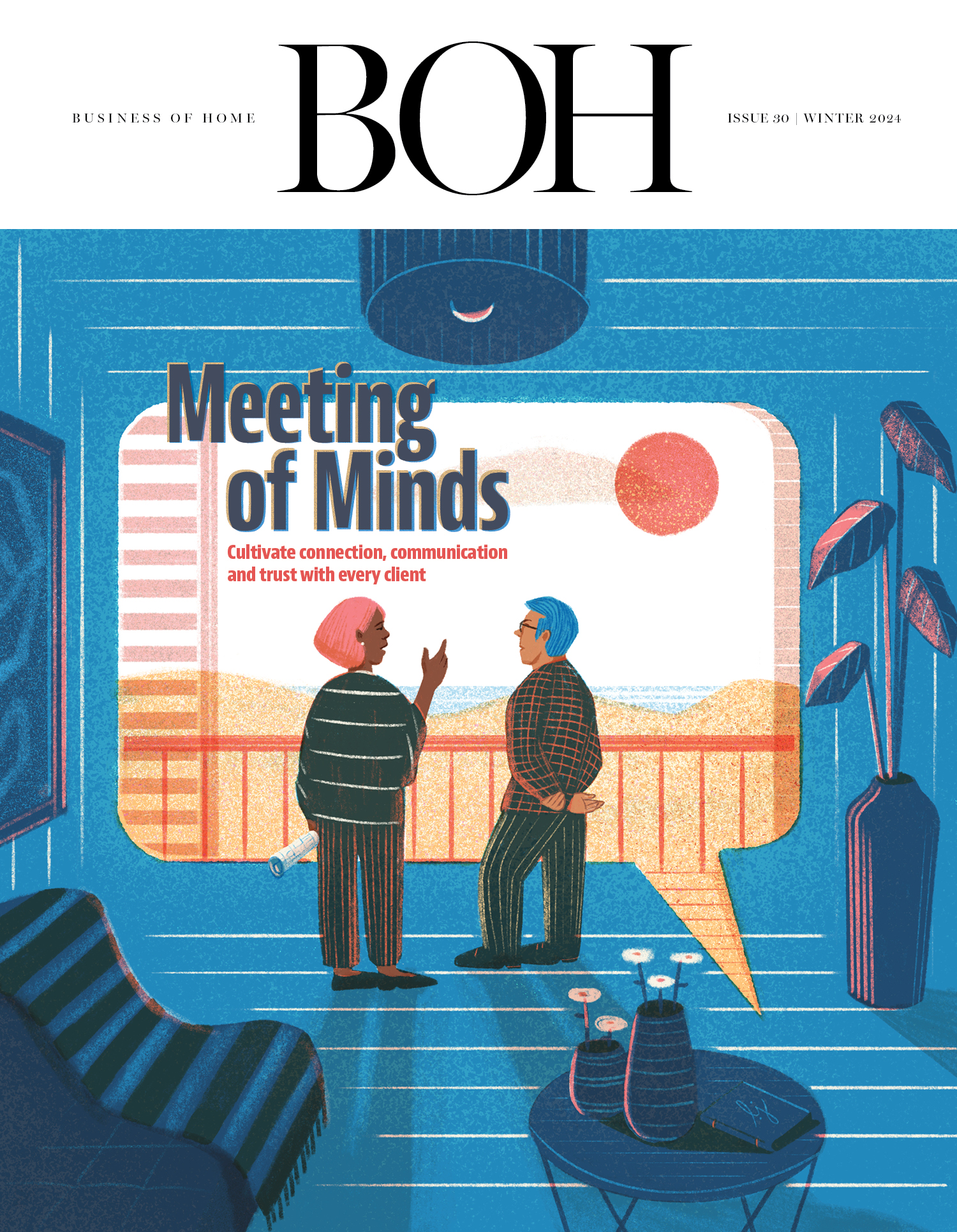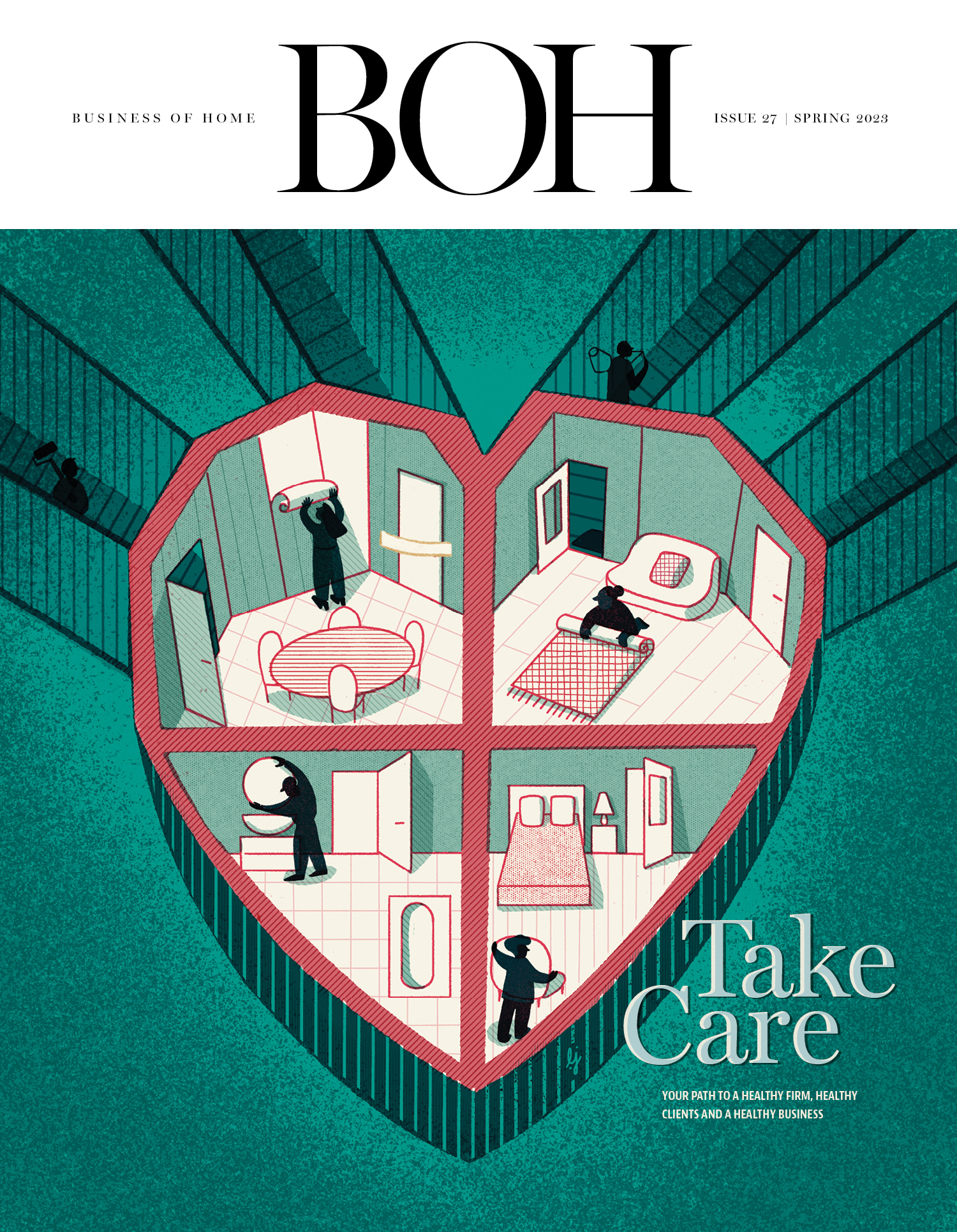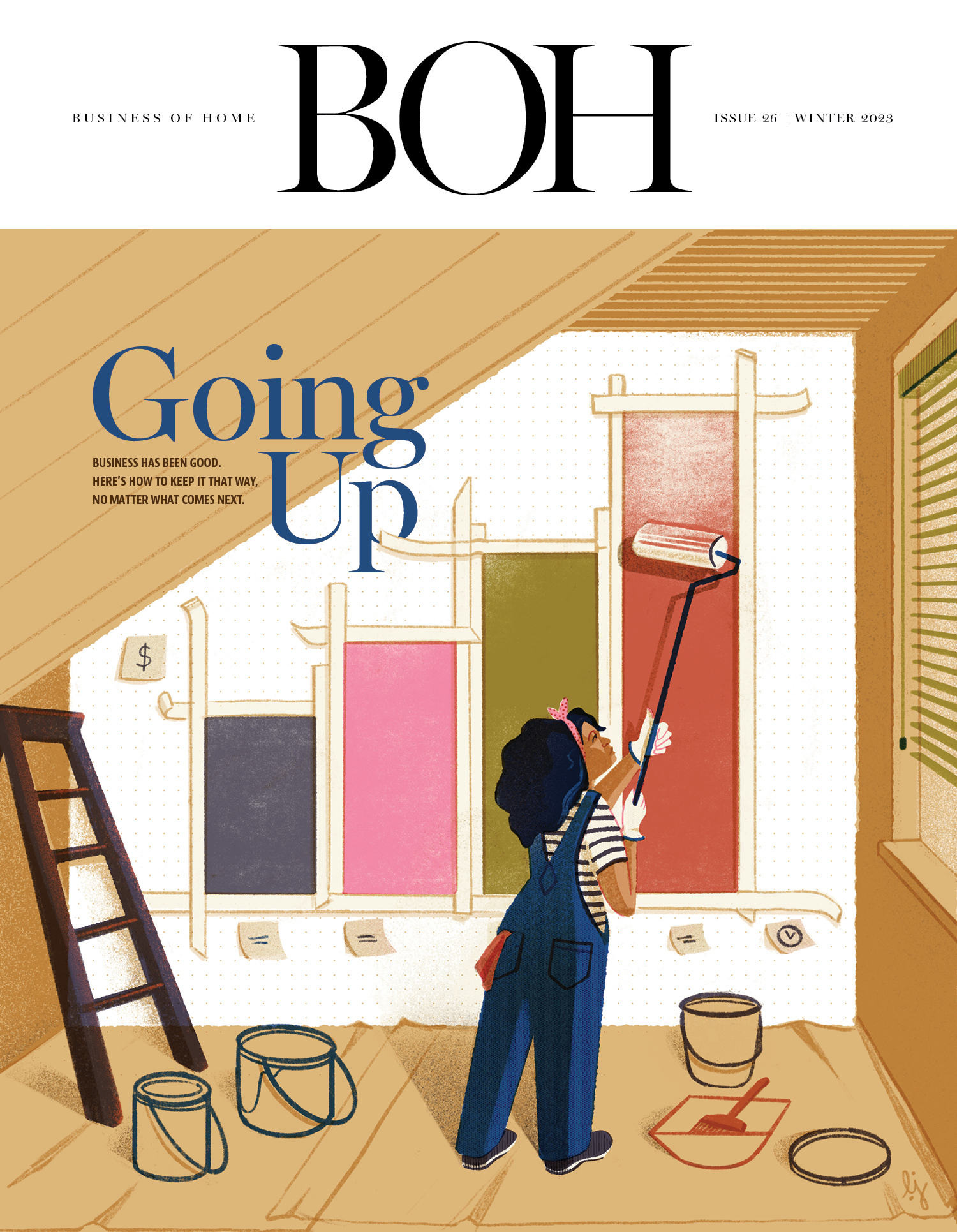Roberto Román has always loved stone. Growing up in Ayacucho, Peru, he was surrounded by the region’s ancient quarries and dreamed of one day being a stonecutter. “Eventually, life led me to work at a marble workshop, and I felt like a fish in water,” he tells Business of Home.
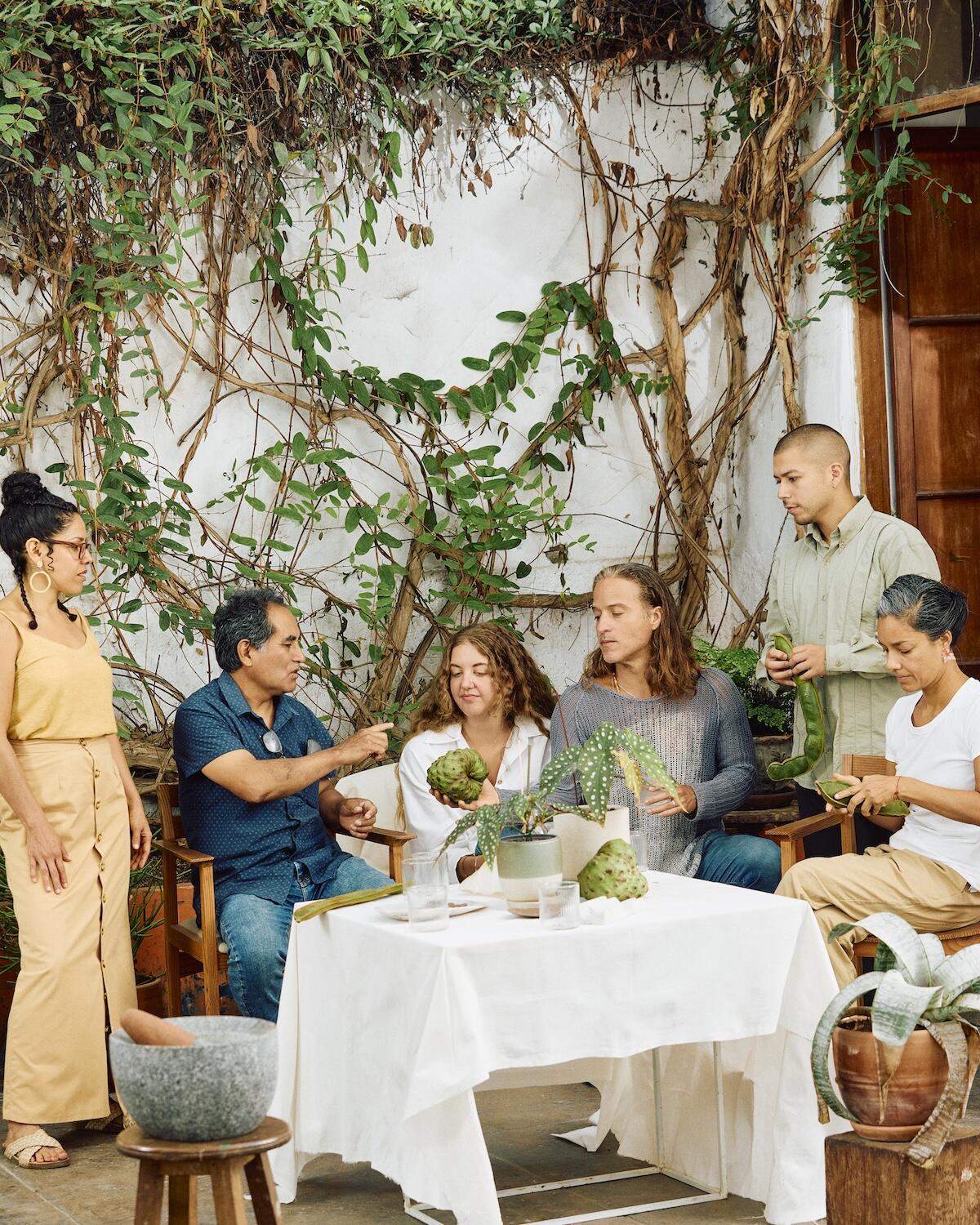
Román began honing his craft working for a stone finishes company, where he spent his days hand-making countertops, walls, fireplaces and gravestones. While working on a residential project, he met Rafael Freyre, founder of Lima-based art and architecture firm RF Studio, who quickly recognized his talents. “Roberto lives in Huaycán [a rural town east of Lima]—a world of stones, hills and rivers,” explains Freyre. “He has a family tradition: His grandfather and father worked with stone, and he has inherited those skills.”
Having just returned from Rome—a city renowned for its ancient stone architecture—Freyre was intent on designing a line of sculptures and furniture pieces inspired by natural strata. The pair began meeting on weekends to flesh out ideas, and soon started experimenting with fragments of marble, travertine and granite. “What’s special about Roberto is that he’s not afraid of doing difficult or complex things,” he says. “Usually, people told me, ‘No, that’s too hard,’ or ‘That can’t be done,’ but he’s always had the drive to move forward and try.”
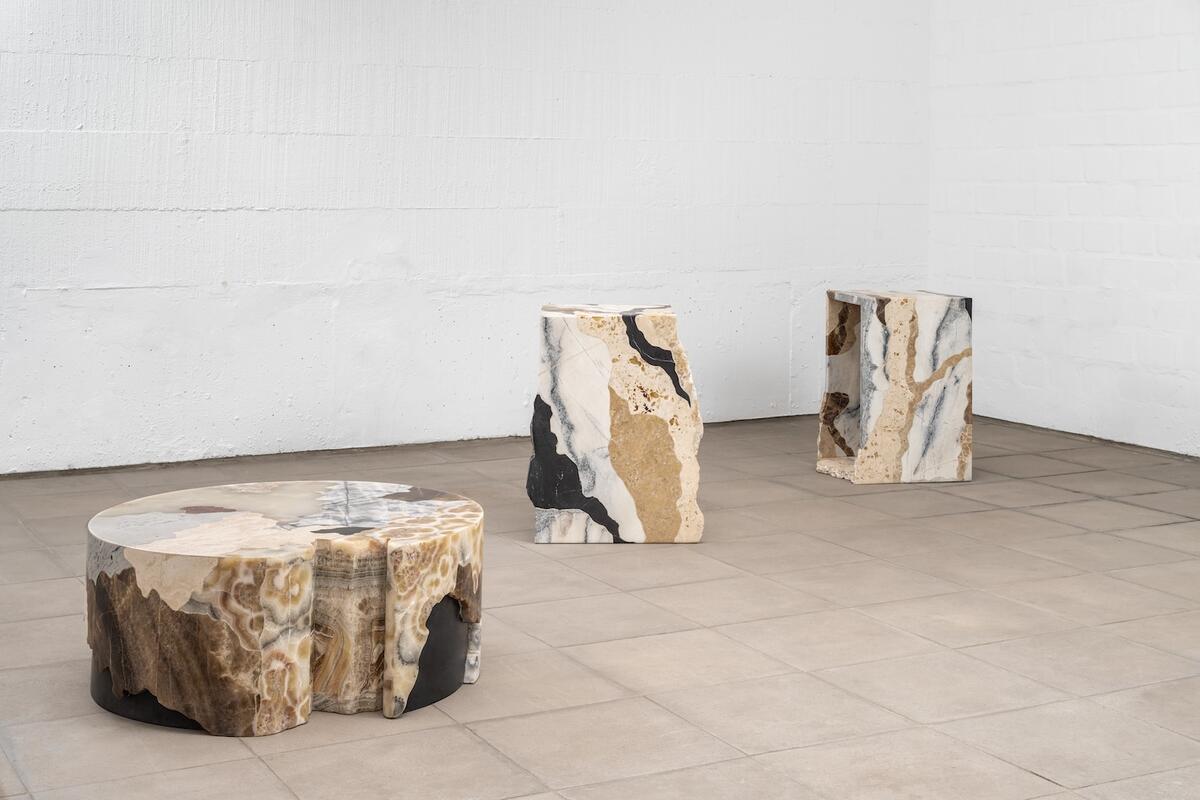
The resulting collection, Mapa de Suelos (Soil Map), is a series of sculptural stone tables that evoke the layered geology of Peru’s landscapes. The line spans 13 one-of-a-kind designs—three of which are available exclusively through Galerie Philia—composed of a hand-laid mix of locally sourced marbles, travertines and onyx. Using these materials, the duo forge distinct geometric motifs that mimic aerial views and geological studies of the Andes Mountains and Amazon rainforest. “The goal was to create pieces that felt deeply connected to the land we inhabit,” says Freyre.
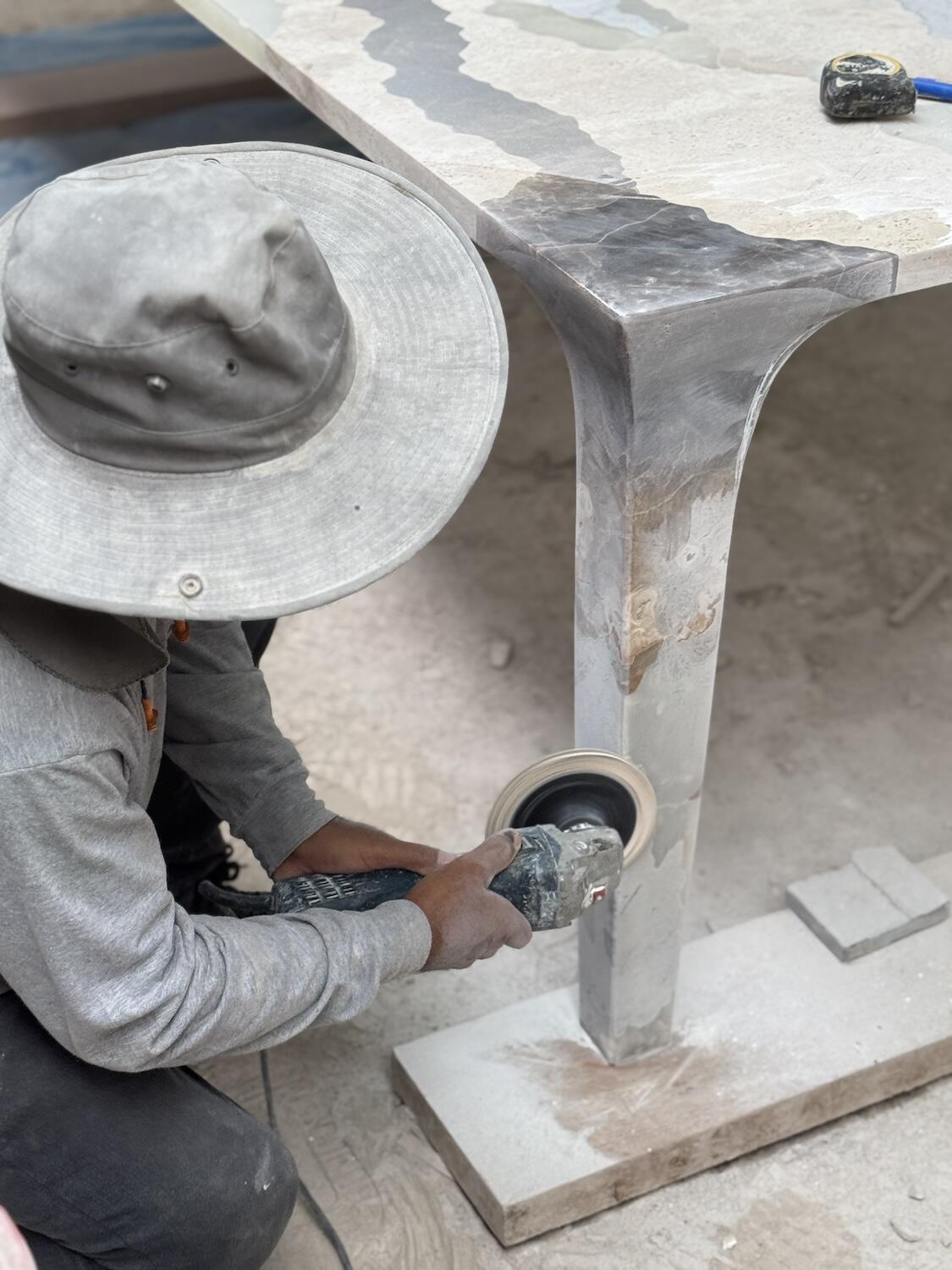
Each individual piece from the Soil Map series took days—sometimes weeks—to construct, and required an assortment of specialized hand tools, ranging from diamond-tipped blades to stone grinders. “A sculptor once told me: ‘The tools [that work best] today haven’t evolved much compared to the past,’” says Román. “Nowadays, people use computers, water-jet cutters, lasers, and all sorts of tools, but I feel like those ‘sophisticated’ tools can diminish the natural look and texture of the stone.”
The most complex design in the collection, Table N° 7, was commissioned by chef Virgilio Martínez’s world-renowned Central restaurant in Lima. The nearly 3-foot-wide tabletop showcases an array of Peruvian stones, including granite from Lima’s Chosica district and slate from La Herradura beach. “Many of the stones we used were considered offcuts or waste,” says Freyre.
RF Studio plans to continue to collaborate with Román on stone pieces and commissions, though Freyre says the process can be a lengthy one. “They can take months to build, meaning the studio can only accommodate a limited number of commissions per year,” he says. “We want to highlight the craftsmanship and imperfection, and show the process behind each design.”




